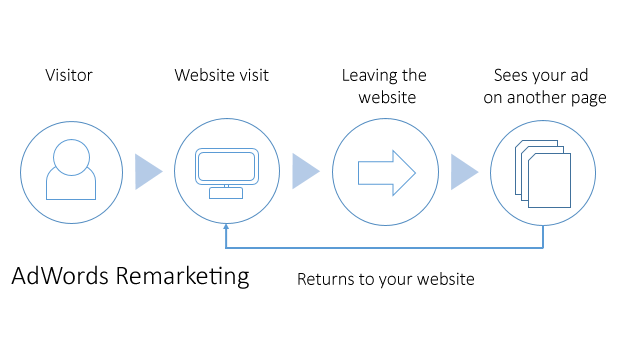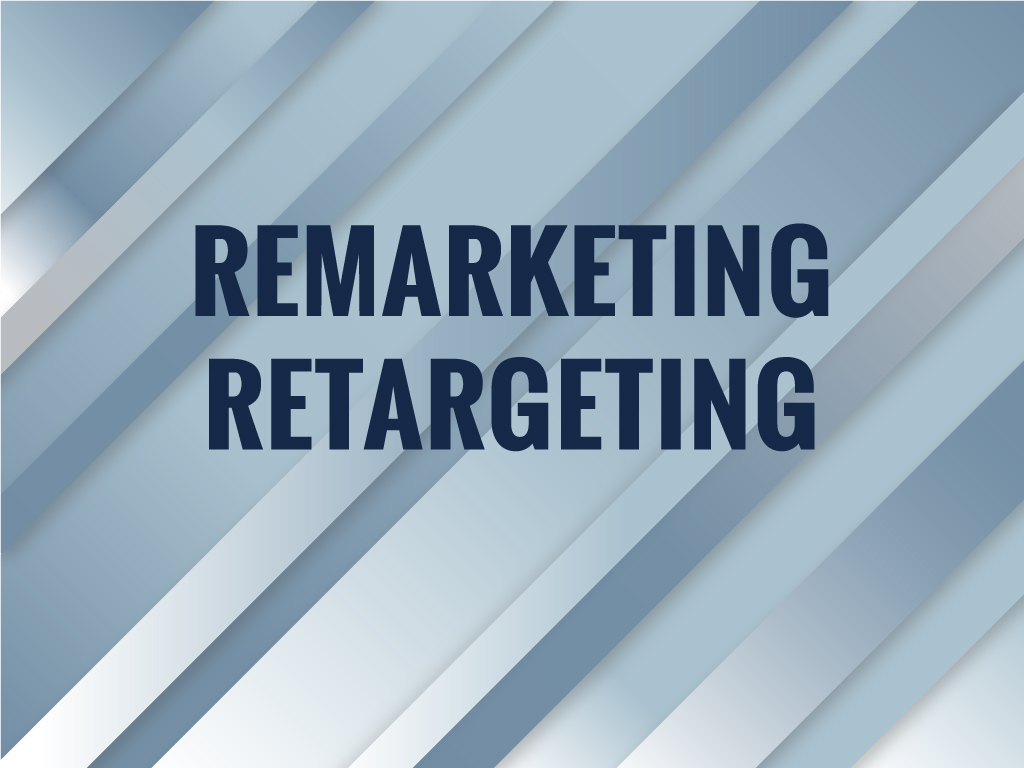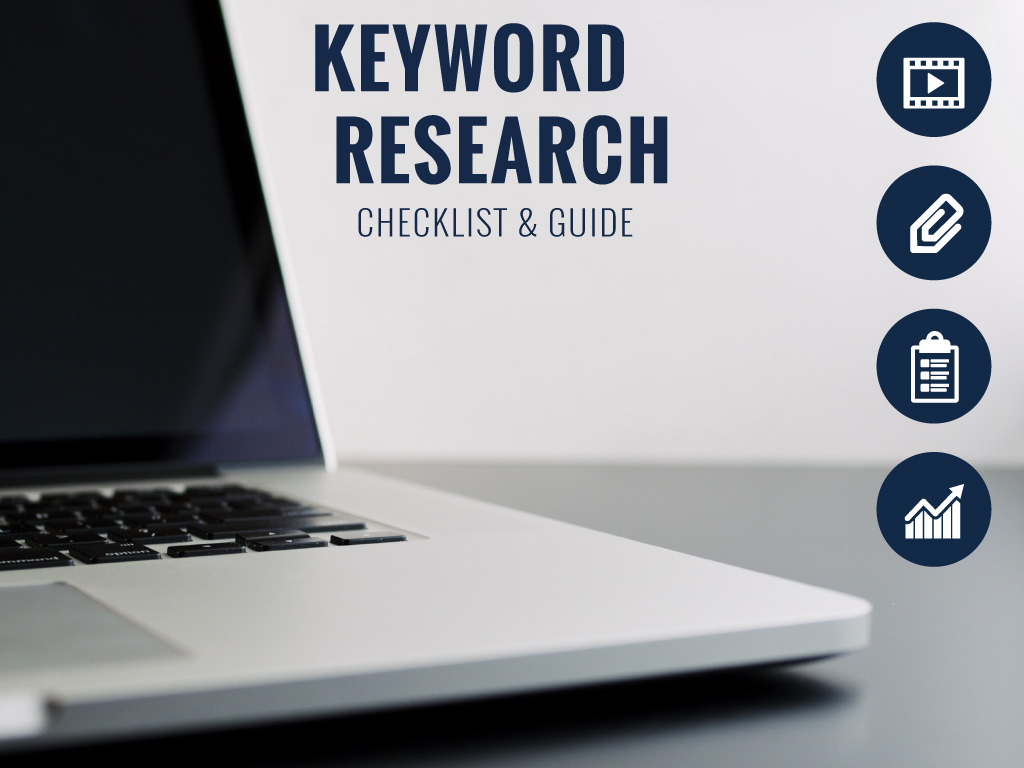Remarketing Retargeting
We’ve been asked and thought it would be good to clarify for people just starting out with advertising.
Remarketing Retargeting Are They Different?
What is the difference between Remarketing and Retargeting?
There is no difference Remarketing retargeting the words are interchangeable. Retargeting is also known as remarketing. Some people might separate out the ideas but they are the same. The terms are used interchangeably. Now that that is out of the way let us explain a little more. Unlike regular banner display ads, retargeting ads use targeted to people who have visited your website or a specific page on your website. Retargeting/Remarketing ads are served to people who have already visited your site.
Remarketing enables you to position targeted ads in front of a defined audience. A defined audience that has already visited your site.
Remarketing is one of the most cost-effective forms of advertising online.
Why is it effective? Essentially you’re reminding your visitors that they were interested in your products or services.
This increasing brand awareness allows you to target specific people who visited specific pages
You’ve got a few options for implementing your retargeting. You can use different platforms. The 2 main ones are Facebook & Google. You can also use 3rd party platforms like AdRoll, Retargeter, and a few others.
Two Main Types of Retargeting Pixel-Based & List-Based.
The way each works is slightly different. Each also has different advantages and disadvantages as well
Pixel-based retargeting
A way to re-display your material to any anonymous site visitor. This is the most common type of retargeting.
The advantage of pixel-based retargeting is;
- it is timely (immediately after leaving your site),
- specific to a particular page on your site, and is behavior-based.
Disadvantagespixel-based retargeting is;
- A lower volume of people in the campaign at any given moment because it’s all based on how often people are coming to your website, viewing certain pages, and leaving.
- It can be complicated and can cost you a lot of time to implement the JavaScript on different pages on your website. We can help you here
- Serving less targeted content to people who haven’t engaged heavily with your brand website, therefore, a lower than expected clickthrough rates than other types of campaigns.
List-based retargeting
Works after you have received someone’s contact information and you’ve put it in your database.
The advantage of list-based retargeting is;
You can use lists of your existing contacts for certain types of retargeting ads. You upload a list of the email addresses to a retargeting campaign (
- usually on a social network and the platform will identify users on that network who have those addresses and serve retargeting ads just to them.
- allows you to have highly customizable criteria for your ads because it’s based on more than the behavior
- you’re choosing who goes on which list.
Disadvantages pixel-based retargeting is;
- It’s possible that a person on your list gave you one email address and the social network another, in that case, they won’t see your ads.
- you’ll need a fairly large list to make this type of retargeting effective.
- you have to maintain and update the list. Not automatic like pixel-based retargeting.
Their Powers Combined List Based & Pixel-Based
Let’s talk conversions and conversion goals. You want to get people to click on your ad and take the next step. Conversion campaigns are best used to align a specific list with a clear next step in the funnel.
We use specific lists and pixel retargeting with a clear vision of our next step funnel process.
Conversion campaigns are great because you can use it for multiple parts of your funnel. You can use pixel-based ads to generate leads. The ads will direct people to a giveaway page where they can give over their information and you put them in a list. Then you can use your list-based ads to send over your blog or website and then retarget them along the way of the landing page. Moving leads down a path that goes into your funnel.
What is Google Remarketing?
Google enables you to create remarketing ads can be delivered in text and/or image display formats. You can use the display network or Youtube network for retargeting. Ads are managed by Google AdWords.
How does Google remarketing work?
Google is intent-based. When People use google are looking for something specific. Remarketing works by placing a cookie on your website. When visitors come to the site their IP address is added to a remarketing list (in analytics) You can have multiple lists with a range of different criteria.
The Google remarketing feature has recently revisioned. Google has added more features and controls for advertisers (which we are going to dig into another day). The remarketing allows more flexibility through using <a
href=”https://developers.google.com/analytics/devguides/collection/upgrade/” target=”_blank” rel=”noopener noreferrer”>upgraded Google Analytics code. This allows for lists to be created and managed without the need to place the specific code on the website.
For Google remarketing, there is a minimum of 100 ID’s on each remarketing list before a campaign can become active. This is why we tell people to set up their data To be successful it’s important to make sure your ad is relevant to what your visitors are looking for. Also, enticing people or encouraging them back to your website for a reason (additional discount, etc).
If your aim is to raise brand awareness then create ad doing that. To achieve exactly that display your brand to visitors
over a period of time. Remarketing is part of Google AdWords which is great as you can track outcomes through normal conversion tracking. Web retargeting works well for impressions since the ads follow your targeted audience throughout the internet, not just on a few specific social media sites.
What is Facebook Remarketing Retargeting?
Facebook remarketing retargeting is a way of reconnecting with Facebook users who visited your website. This is achieved by installing a pixel on your website. Facebook Ads are a different form of advertising compared to search engine marketing ads (excluding display) as they are not intent-based. Facebook is more like flipping through a magazine. Social media retargeting can work well. People spend more time and are more likely to share, reply, and discuss your content although it is important to remember why people are using social channels. They are not looking to be sold to. They may be more likely to see the ads are posted but that doesn’t mean they will share.
How is Facebook Remarketing achieved?
Once the pixel has been added. Information gets relayed back to Facebook. The next step is to set up some custom audience. Custom audiences help you to capture the users and information. You can even auto-remove visitors who complete the goals you set up. This may seem confusing but we promise once you start you will get more into it. You can add mailing lists as a custom audience. You can segment within your custom audience, and target them with relevant content. You can even exclude users who have completed a sale/conversion. And you can even create a new custom remarketing segment for those who visited your ‘thank you’ or ‘checkout confirmation’ pages. This might be helpful if you have another product service that might suit them at a later day.
Our opinion. If you want to go after a broad audience than thinking about facebooks ability to create Broadly segmented audiences might be right for you.
Facebook remarketing allows you to drive conversions. When customers leave your site and see you again on Facebook, the brand image resonates more and becomes more recognizable. The concept of repetition significantly increases a brands chances of converting their audience.
Choose Facebook Retargeting or Google Retargeting? Both?
The truth of the matter is that every business is different and therefore their audience is different. It’s widely recommended that if possible, you should try to combine both. If you can’t, then narrowing down your core goals can get you a better idea of which type you should use.
- Facebook sessions tend to be longer. People hang out.
- Google is the middle man for getting to where you want to go. People usually have less time to see your message.
- While Google AdWords’ remarketing is exceptional, it isn’t exactly ideal. Even though Facebook remarketing only works on Facebook itself, it’s a hub through which an incredible amount of traffic is funneled.
- Google’s reach is wide through the Display Network but is considerably smaller than third parties like Facebook’s AdRoll.
- The biggest flaw surrounding Google is the fact you can’t use any keywords that stray too far from your core product or Google just flat out says no. You’re also not able to market on websites outside of your chosen subject or they won’t display.
- Google suffers in comparison to Facebook because you can only build up based on code from your website with Google, and it can only use the categories that they track. Facebook’s demographic detail, activity logs and interest tracking sort of have Google stumped on this one.
Remarketing retargeting is an appropriate tactic for most businesses with a small budget. And we recommend adding it to your online advertising strategy. Each business can create a clear strategy where you have a direct way you reach your clients. Learn More about what you can do for you.

Resources
- Create Your First Remarketing
- WHAT IS RETARGETING AND HOW DOES IT WORK?
- A Beginner’s Guide to Retargeting Ads
- Facebook Remarketing vs Google Remarketing
- Facebook Ads vs Google Ads: Which One Should You Use
- How to Set Up Strong Remarketing Lists in Search – Google Best Practices for AdWords








